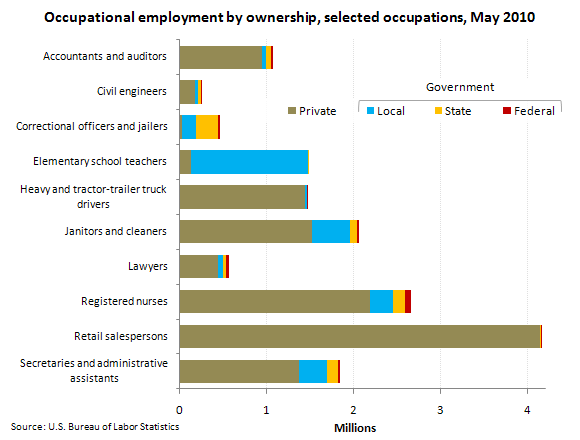Job Distribution in the Private and Public Sector

In local government, 5 of the 6 largest occupations were education related. On the state level, correctional officers and jailers were the largest occupation, with employment of nearly 257,000. How do states with fewer inmates adjust their budgets? With so much money going to support the people who keep prisons operational, how are other state projects able to get off the ground?
The private sector was dominated by work of another ilk. Retail salespersons was the largest occupation (as measured by the number of employees) in the private sector. The proportion of waiters and waitresses that were employed in the private sector was similar to that of retail salespersons.
Over 8 out of 10 (82 percent) of the nation’s 2.7 million registered nurses worked in private-sector establishments in May 2010; however, registered nurses was one of the largest occupations in state government, though more than half of the registered nurses that work in government-owned establishments were employed in local government.


